
Thorne was born when Southern Pacific purchased and realigned the Carson & Colorado Railroad. While the town never grew beyond a “2 saloon town” it played a critical role in mining in Nevada and transportation to Bodie and Aurora. During World War II, Thorne supplied the United States military with bombs, rockets, torpedos, depth charges and ammunition.
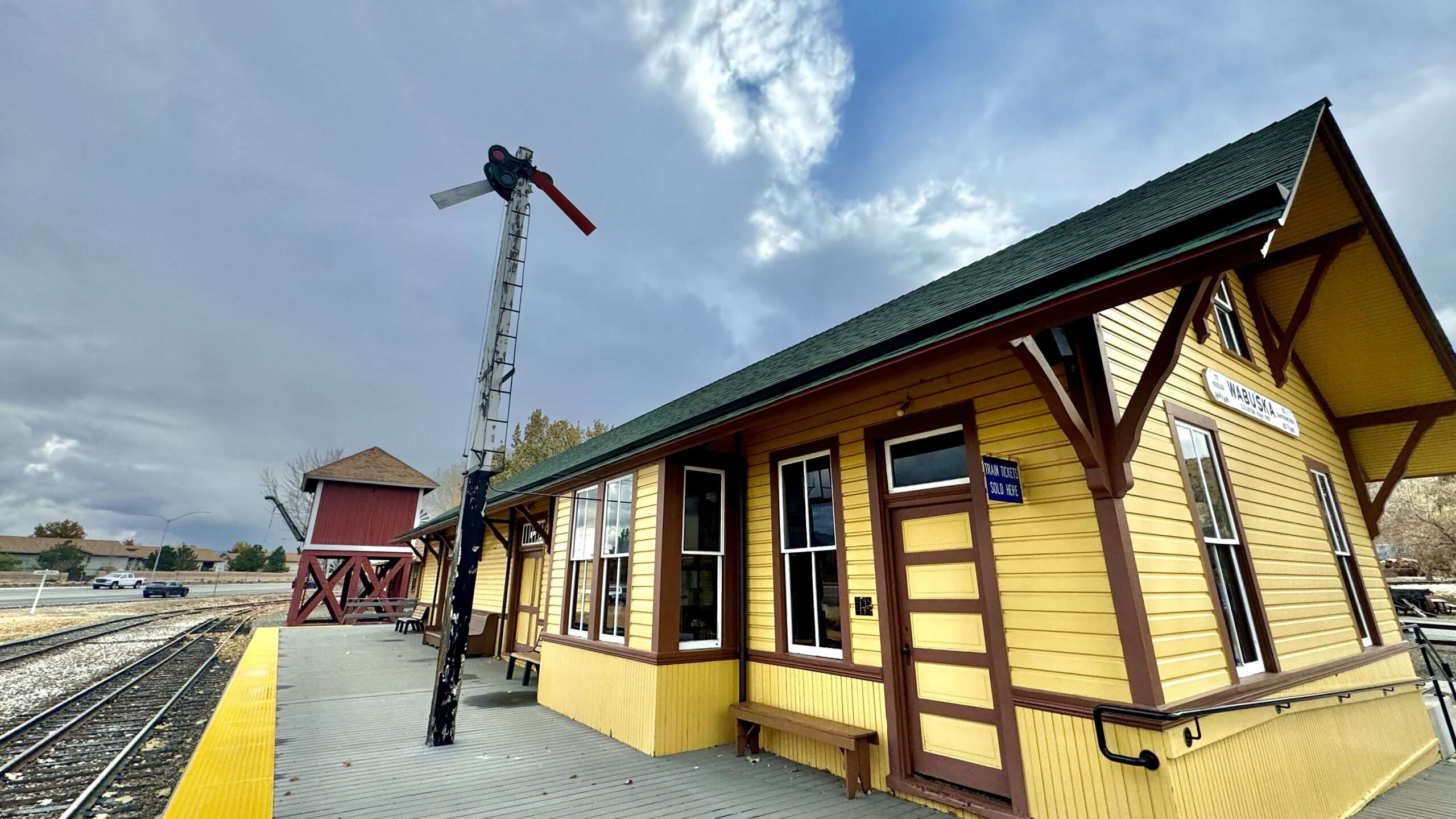
(Moved to Nevada State Railroad Museum, Carson City)
A large barn marks the spot; some say it was used to house the Bodie stage. Foundations and the railroad sign mark the location of the station. You can visit the site where federal agents enforcing prohibition were escorted out of the area in anticipation of Independence Day festivities.
Carson & Colorado
In 1880, H. M. Yerington built Hawthorne as a depot and diversion for the narrow-gauge Carson & Colorado Railroad. At the southern tip of Walker Lake, the site was strategically located on the Esmerelda Toll Road, connecting Wadsworth and Candelaria. In 1881, Hawthorne boomed. In 1883, it became the county seat for Esmeralda County, which relocated from the declining mining town of Aurora.


Hawthorne, Nevada
Southern Pacific acquired the Carson & Colorado in 1900. Soon after, mining booms in Tonopah and Goldfield increased travel along the route. In 1905, the rails converted from a narrow to a standard gauge. The line realigned, bypassing Hawthorne and creating the new Thorne station. In the early 1900s, Thorne was little more than a whistle-stop with a view of Walker Lake and Hawthorne, where the action was.
Thorne
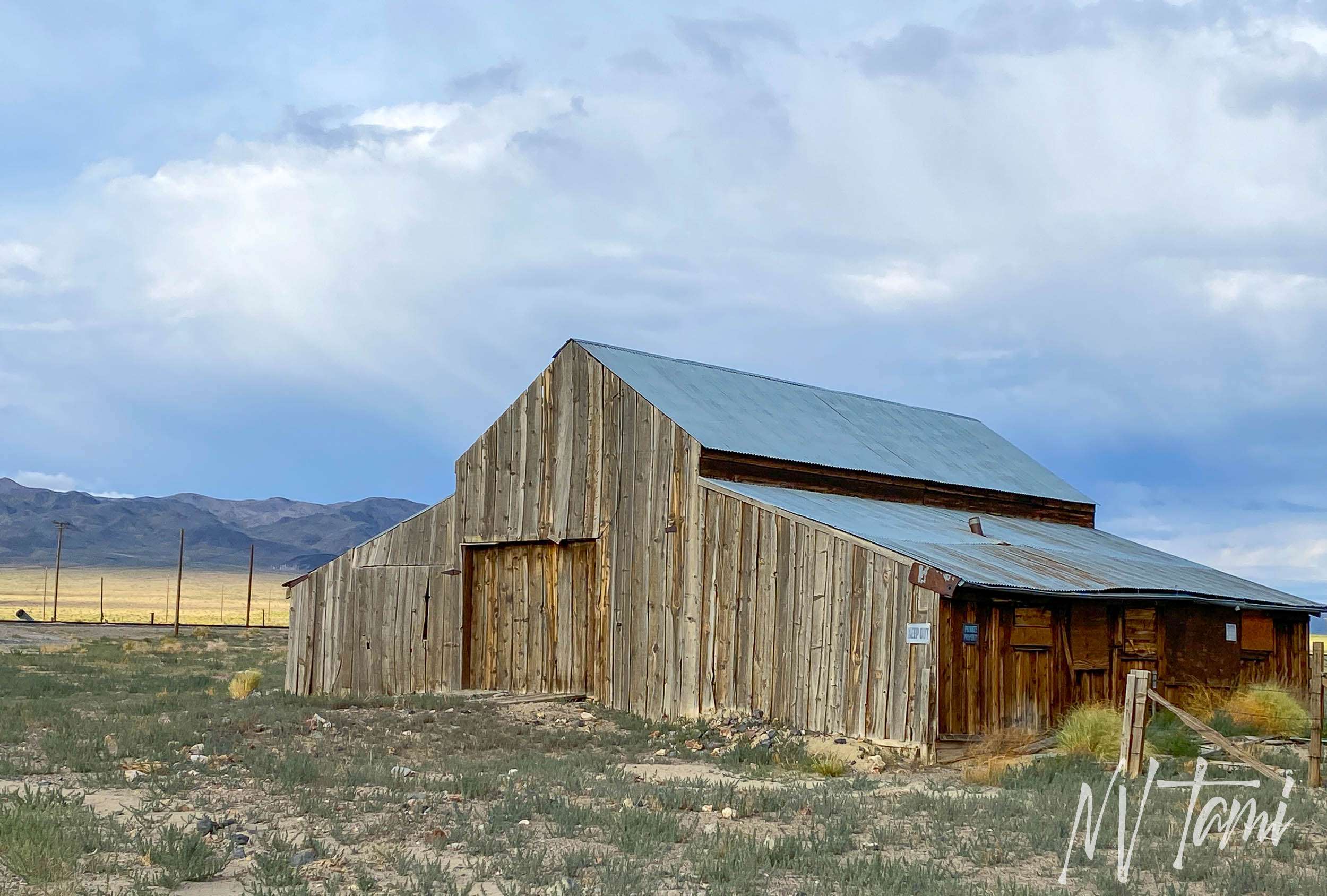
Thorne became a jumping-off point for passenger and freight stages headed to Bodie, Aurora and Lucky Boy. Charles Riley Gilkey was a chauffeur for the “autobus” stage to Bodie and later served as the Thorne postmaster. Between 1909 and 1910, Thorne was a hub of activity shipping ore from Lucky Boy, but declined following the boom.

The name Thorne was a derivative of Hawthorne. The town grew to include two saloons and a post office opened on July 1, 1912. In 1913, Clarence Turnage listed his business at Thorne for sale, including a saloon, restaurant, and groceries.

Reno, Nevada · Sunday, August 24, 1913

(Photo credit: Nevada State Journal Dec 16, 1945)
An explosive situation
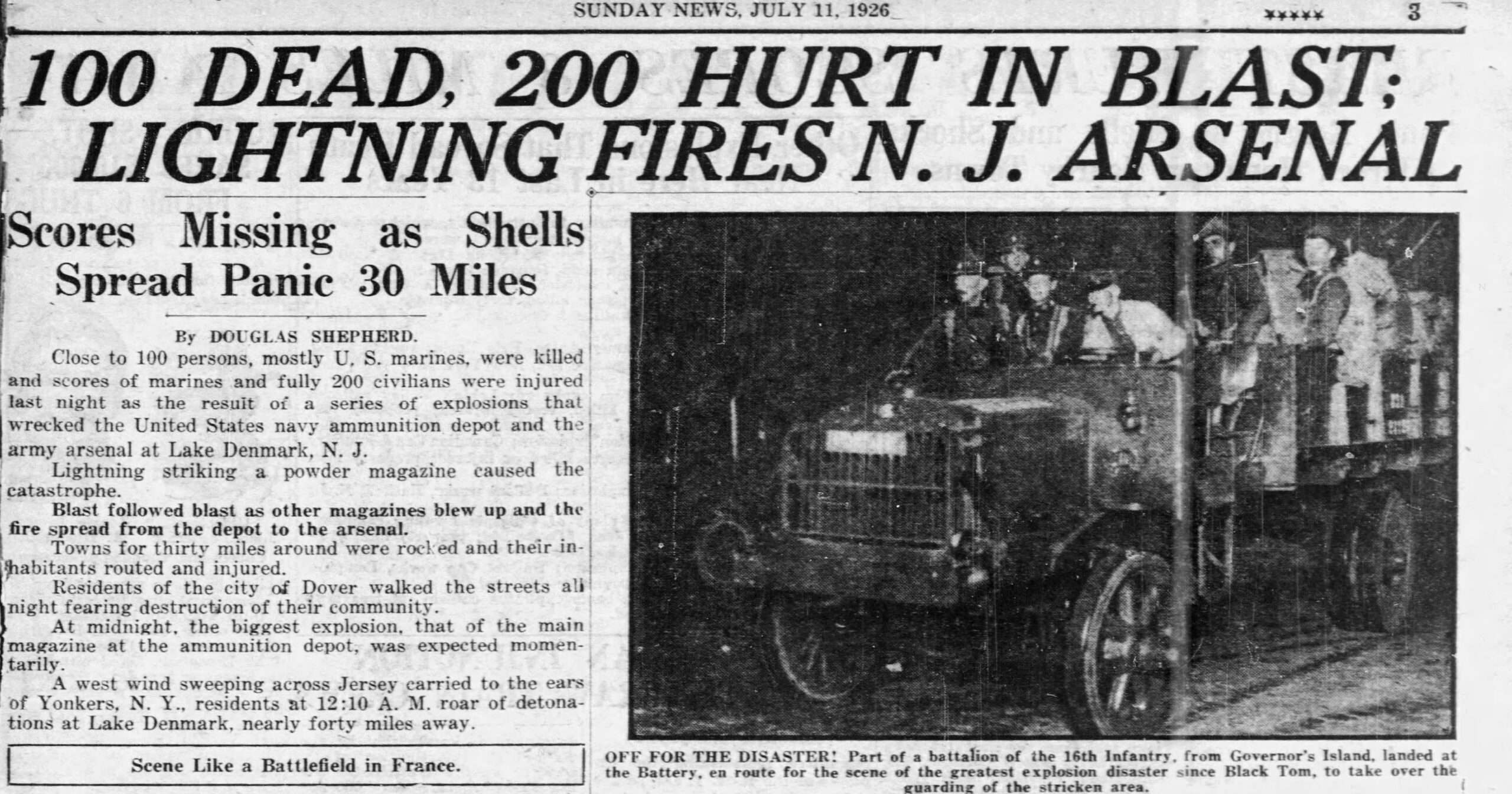
New York, New York · Sunday, July 11, 1926
On July 10, 1926, an explosion across the country in New Jersey forever changed Thorne and Hawthorne. Lightening struck a Naval ammunition warehouse at the Picatinny Arsenal, setting off three days of explosions. Everything within 3,000 feet vaporized, and buildings within half a mile were leveled. Shells were found for miles, and debris fell over thirty miles away. Newspapers reported that 100 people died, but later reports show the number was closer to 20, with 53 seriously injured.

(Photo credit: Randall Gabrielan)
Hawthorne Naval Ammunition Depot
In 1928, Congress created a Board of Officers to review the best storage conditions for ammunition. They recommenced a remote location 1,000 miles from the Pacific Coast with the possibility of expansion. Hawthorne must have seemed like an ideal location, with a population of only a few hundred. The largest towns of Reno and Carson City, with populations of 18,000 and 1,800, respectively, were a hundred miles away.

(Photo credit: Localwiki)
Construction of Hawthorne Naval Ammunition Depot started in July 1928, and the first explosives arrived in October 1930. in 1931, a spur connected Hawthorne NAD to the Sothern Pacific at Thorne. Six hundred Marines provided security. The NAD remained stable through the peaceful years of the 1930s.
Thorne’s role in World War II
With the onset of WWII, Hawthorne NAD became the supply center for most of the US military’s bombs, rockets, torpedos, depth charges and ammunition.
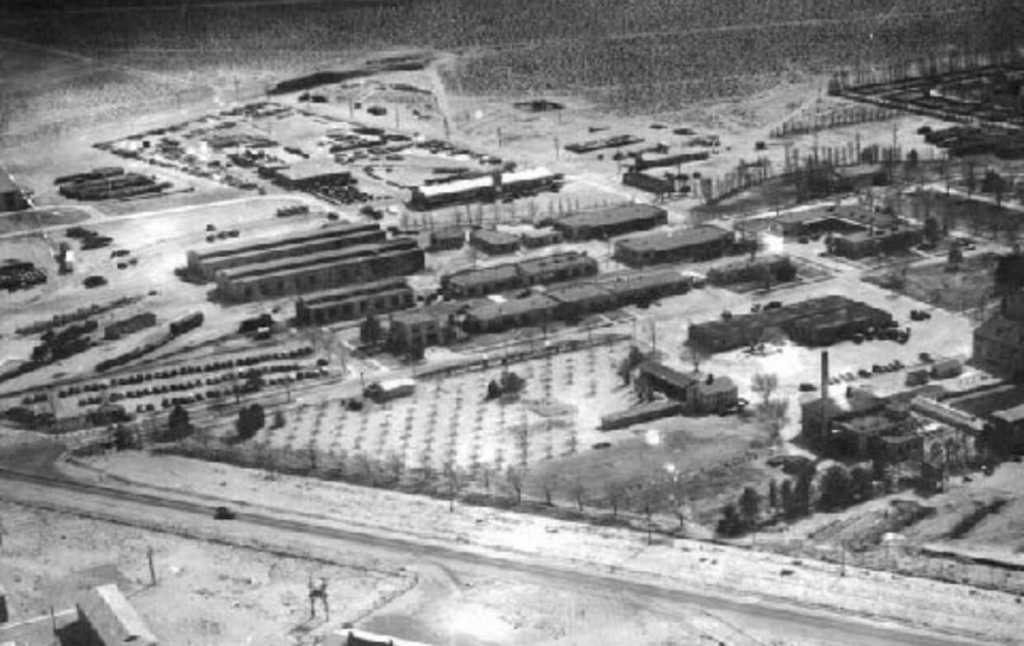
(Photo credit: Mineral County Independent News)
Thorne station became one of the busiest stations for the Southern Pacific Railroad, assisting the war effort. Traffic at Thorne increased from 380 to 5,000 rail cars per month. In 1944, freight charges for Thorne were $90 million. Activity decreased at the conclusion of the war but saw an increase with the Korean and Vietnam wars.

(Photo credit: Nevada State Journal Dec 16, 1945)
During the war, Thorn’s staff expanded to meet the shipping needs. The crew were said to be “real home-front soldiers all through the war” with almost no absenteeism. Trainmaster J.F. Cuiston recognized the Thorne staff for their service.


(Historic photo credit: Nevada State Journal Dec 16, 1945)
Thorne’s population expanded to one hundred. A few houses were at Thorne but most people lived in trailers.



Thorne to the rescue

While Torne was only a few miles outside of Hawthorne, sometimes that made a difference. In 1912, three couples set sail on Walker Lake from Schurz. The infamous Nevada winds kicked up and the party couldn’t return before nightfall. A crisis report was sent to Thorne, where the station agent, M.F. Turnage, called Senator John Miller’s house. Reaching the senator’s brother Alvey, they raced to the lake in horse and buggy to a gas-powered motorboat. Thankfully, the couples were able to reach the shoreline.
“Dry Agents” escorted out of Nevada

On July 3, 1929, “Dry agents” appeared undercover in Hawthorne, enforcing prohibition. The agents caught the attention of lookouts, who searched their vehicle and found prohibition report sheets. Before the 4th of July festivities, bootleggers escorted the agents to Thorne station. They men were left with instructions to “keep going.”
Steps which will be taken to apprehend the bootleggers at Hawthrone have not been announced.
Nevada State Journal, July 18, 1929
There are no more mentions of the incident, leading one to believe Hawthorne wasn’t too happy with interference from federal law enforcement from Los Angeles.
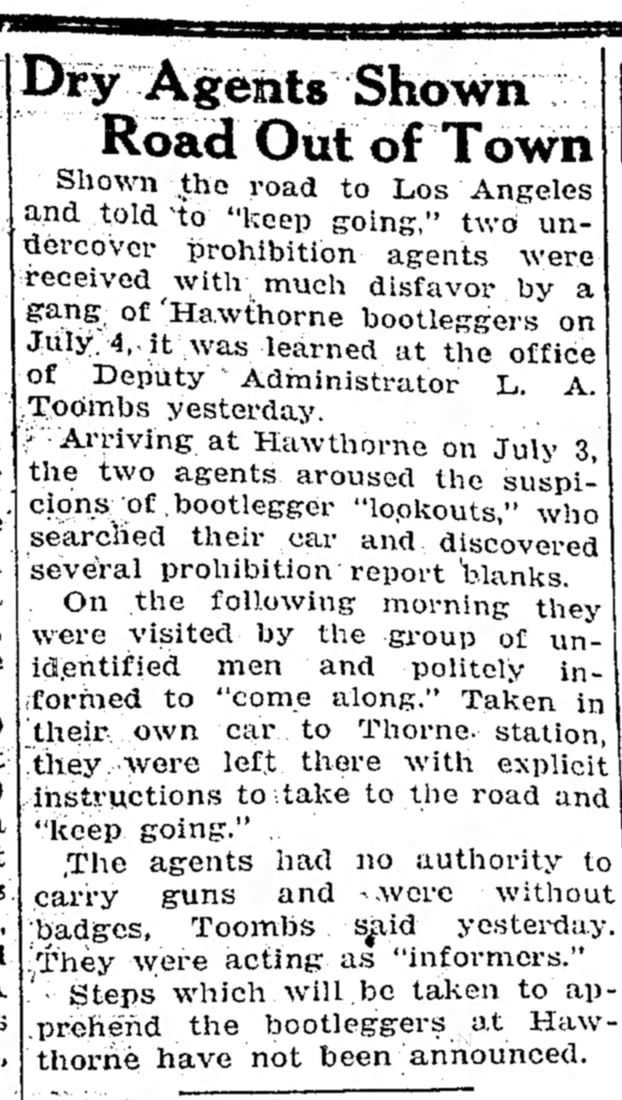
Reno, Nevada · Thursday, July 18, 1929

Reno, Nevada • Sun, Dec 16, 1945Page 19
WANT MORE GHOST TOWNS?
For information on more than five hundred ghost towns in Nevada & California, visit the Nevada Ghost Towns Map or a list of Nevada ghost towns.
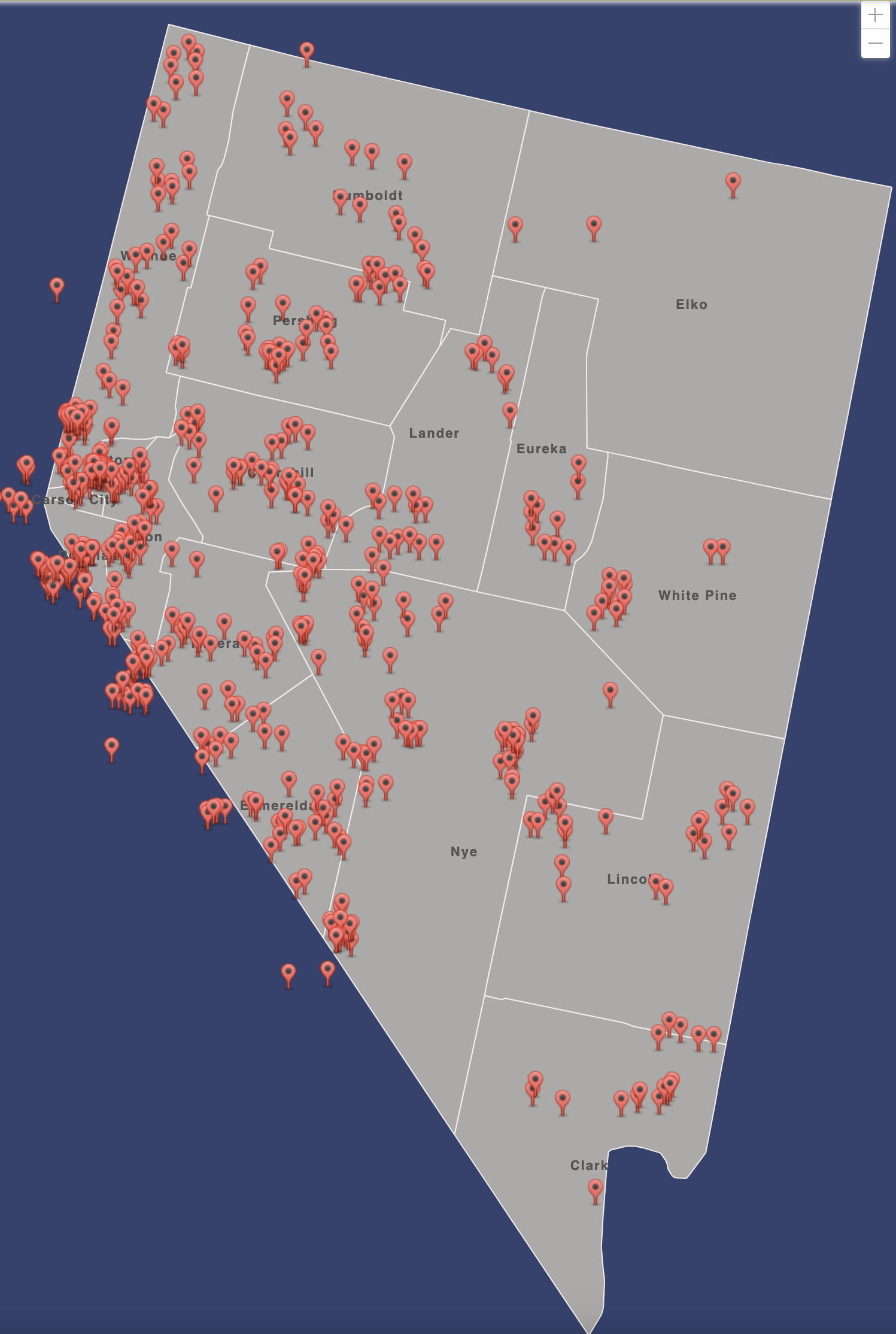
References
- Billeb, Emil W. Mining Camp Days: Bodie, Aurora, Bridgeport, Hawthorne, Tonopah, Lundy, Masonic, Benton, Thorne, Mono Mills, Mammoth, Sodaville, Goldfield. Howell North Books, 1968. Pages 3, 37, 151-152, 161, 173, 179.
- Carlson, Belen S. Nevada Place Names: A Geographical Dictionary. University of Nevada Press, 1974. Page 231.
- Daily News
New York, New York · Sunday, July 11, 1926 - Gammet, James and Stanley Paher. Nevada Post Offices: An illustrated history. Nevada Publications, 1893. Page 126.
- Myrick, David F. Railroads of Nevada and Eastern California Volune1: The Northern Roads. University of Nevada Press. 1962. Pages 171, 204.
- Nevada State Journal
Reno, Nevada • Sun, Dec 16, 1945Page 19 - Paher, Stanley. Nevada ghost towns and Mining Camps. Nevada Publications, 1970. Pages 437, 454.
- Silver, Sue. Mineral County Nevada, Volume 1: Mining Camps, Towns & Places (1860-1900). Museum Associates of Mineral County, 2011. Page 122.
- Silver, Sue. Mineral County Nevada, Volume 3: Early transportation: Stagecoach, steamboat and Narrow Guage Railroad. Museum Associates of Mineral County, 2011. Pages: 4, 6, 18, 21, 23, 25-30, 48-55,
- Silver, Sue. Mineral County Nevada, Volume 5: Roads and Routes of the Past. Museum Associates of Mineral County, 2012. Pages 26, 86, 109, 188, 239.
Chuck says
Wasn’t Walker Lake used to test Torpedoes for the Navy during WW II, because of it’s close proximity to Hawthorne?
Tami says
Good question, I bet the ordnance museum would know.
Roger Peterson says
More great stories from Nevada’s colorful past! Thank you.
Tami says
Welcome, and thanks. So many crazy stories.
Anonymous says
Thank you, this was very interesting.. Info about the region , is always helpful. Thanks!
Tami says
Such a broad variety of history!
James Edmonds says
Another great story. Thank you!
Tami says
Glad you enjoyed it!
Jim Wetzel says
Several years ago I visited the Hawthorne museum. The Docent there had a lot of historical and current information on the impact of the ammo dump being located there.
Tami says
I love the Ordnance Museum. Their volunteers are amazing.
bob h says
Thanks again Tami for bringing to light our Nevada history.
Tami says
Welcome!
John Wrobel says
I was there a couple years back with ECV, thanks for the reminder.
Tami says
Cool, I love ECV!